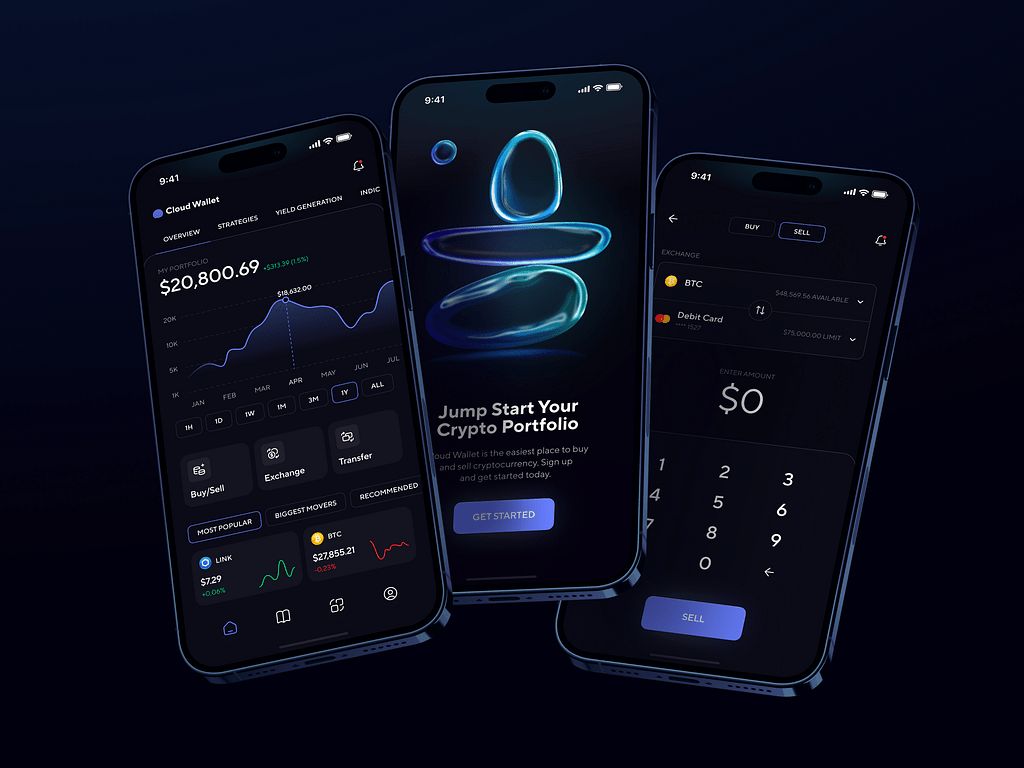Are you a startup founder or product owner in the bustling fintech arena? If so, you’re no stranger to the challenges of designing a stock market app that stands out in a crowded marketplace. How to get ahead? How to attract more potential clients? There are many ways, but one of them is adamant. The possibilities your app offers.
Contents:
The features you include aren’t just bells and whistles — they are the backbone of user satisfaction and retention. You need to solve actual people’s problems and make their lives easier.
In this article, we’ll explore the key options that every stock trading app needs to thrive. Whether you’re refining your current offering or just starting, understanding these essentials will empower you to build a product that attracts and retains users in the competitive world of fintech.
Understanding Your Audience
Before adding any features to your app, you need to be 100% sure the target audience needs them. Otherwise, there will be little benefit. It’s imperative to recognize that users vary significantly—from beginners who are just dipping their toes into trading to seasoned veterans who seek advanced analytics and sophisticated tools. The approach to each type differs.
The Importance of User Types
Beginner investors typically prioritize educational features, user-friendly interfaces, and simplified trading processes. Among trading app features, they value intuitive navigation, guided tutorials, and access to foundational resources that help them understand market concepts without feeling overwhelmed. Enhancing their confidence and competence is key, so features like risk assessment tools or demo accounts could be particularly beneficial.
On the other hand, seasoned traders look for robust functionality, including real-time data analysis, advanced charting capabilities, algorithms for automated trading, and customizable dashboards. They want to make quick, informed decisions, so efficiency and depth of information are paramount. Features like comprehensive market trends, news feeds, and advanced technical indicators can attract this segment.
Creating User Personas
To navigate these varying needs successfully, creating detailed user personas is invaluable. They are fictional representations of your ideal customers based on research, surveys, and interviews. Still, they provide insights into users’ goals, challenges, and behaviors, enabling you to pick only necessary features.
Once you develop personas for both beginners and experienced traders, you can prioritize feature selection to ensure that your app addresses the distinct needs of each group. For example, you might decide to focus on gamification elements and educational content for beginners while integrating API access and algorithmic trading options for advanced users.
Must-have trading app features
Customer Onboarding
Trading means dealing with real money, so you, as an app creator, need to ensure that the user is ready to act and face the consequences.
To tell the user about your product and educate them, add an onboarding to your application. It should be extremely detailed and easy to grasp. You literally lead the person by the hand… until they choose to press “Skip”.
But how to make them read the onboarding through without skipping? Apart from writing captivating texts, work on engaging visual design. Illustrations and subtle animations can keep the user engaged throughout the onboarding process. They work as beacons for the person’s eyes and keep them on track, complementing the texts.
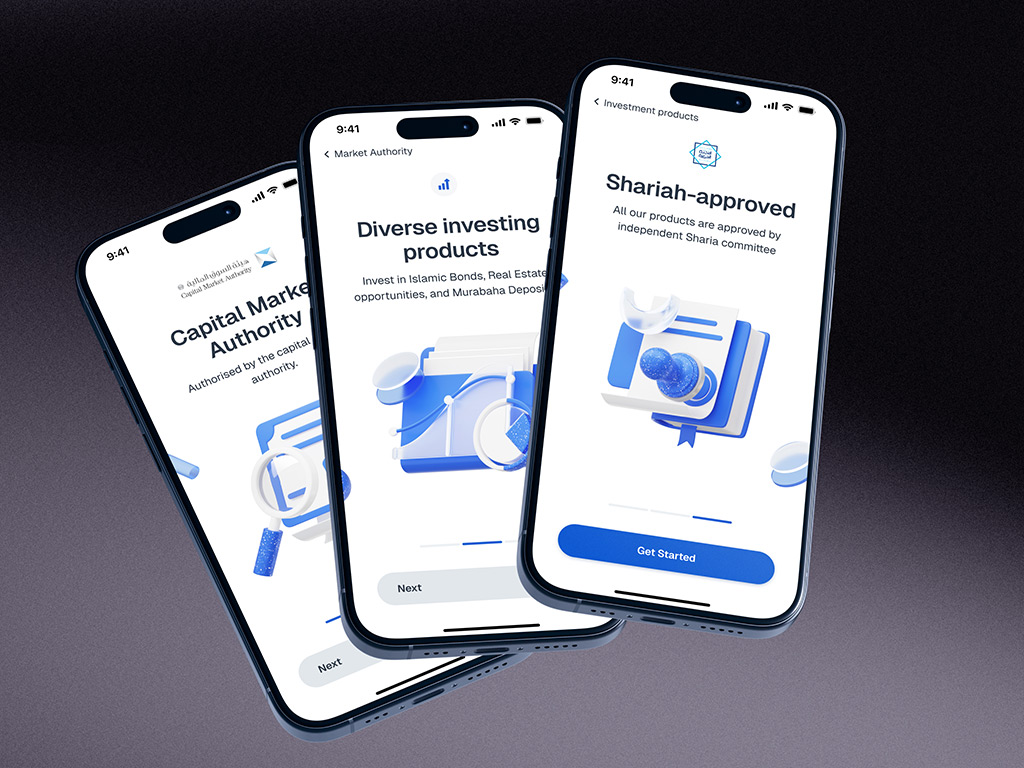
Customer onboarding for a stock market app by Shakuro
Profile Status
Investors act in the market differently. Some invest in different securities, for the short or long term, and determine for themselves the level of possible losses. The combination of these features is called an investment profile.
The profile status shows a summary of the user’s current investments and the status of each asset in their portfolio, including real-time prices, changes in value, and overall diversification.
In stock market trading apps, you can divide users into special groups and, based on their investment profile status, you offer personalized recommendations. This feature makes the lives of UI/UX designers and developers easier.
Usually, a broker helps to determine the investment profile with a questionnaire. This way, they can advise the investor on which securities to buy and which ones are better to avoid.
When working on Solio, a Korean stock trading app, we’ve designed a comprehensive profile status that covers up various strategies:

Profile status in Solio app
Questionnaire
We use the questionnaire to determine the profile status. Studies show that when people talk about themselves, the same areas of the brain associated with pleasure are activated, for example, the ventral striatum and medial prefrontal cortex. This process causes the release of dopamine, which creates a feeling of pleasure and satisfaction.
As a designer, you can take advantage of this study and integrate a questionnaire to build an interface that will be of maximum use to the person. Include in your stock market app such questions as:
- What is your investment attitude?
- In how many years will you begin making withdrawals from your investment?
- Once you begin to make your withdrawals, for how many years will you be making them?
- Is protecting your portfolio more important than high returns?
Personalized recommendations based on the user’s profile also help you create a convenient environment. To make the questionnaire more engaging, you need to show not only the completion value but also spice up the process with gamified elements. For example, gift them a reasonably priced stock of a promising company, for which your robo-advisory predicts growth. This way, the user sees positive dynamics and has a motivation to purchase more stocks.
Here is a questionnaire from Solio that helps you build your profile status:
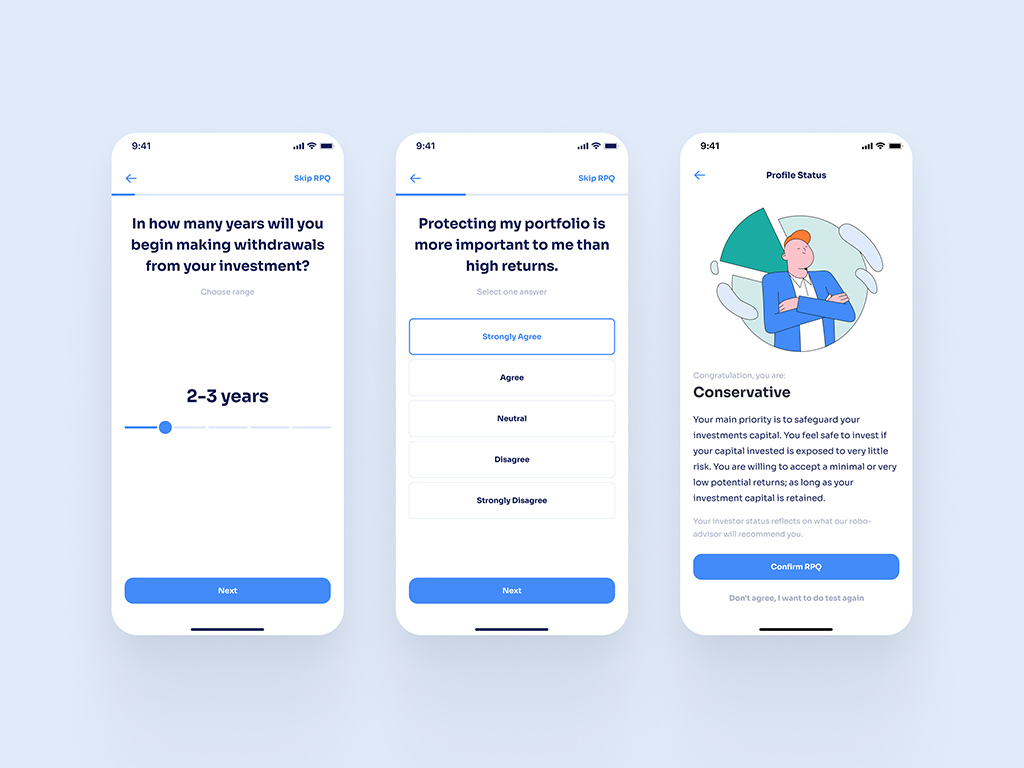
Questionnaire from Solio app
Robo-advisory
These smart helpers use algorithms and data analysis to offer investment advice and management without the need for direct human intervention. They assess a user’s financial situation, goals, and risk tolerance to create a tailored investment portfolio.
Robo-advisor is essential for beginner stock trading apps, where users don’t know where to begin. With automatic rebalancing and tax-loss harvesting, people without the expertise or time to manage their portfolios actively have less stress. At the same time, seasoned traders can also take advantage of this instrument for professional-level insights and portfolio management.
What’s more, integrating robo-advisory into your stock market app is another way of monetizing it. You can offer a subscription for a pro version with this feature. And a free trial is a great motivation for users to purchase the advanced version.
Also, robo-advisory services can significantly reduce management fees. This cost-effectiveness appeals particularly to younger investors or those with smaller capital who wish to maximize their investment returns.
Take a look at the robo-advisor we’ve built for ZAD, a Kuwaiti investment platform. The target audience does not have professional investment experience, so they need a guide to feel safe in their financial journey. Our team came up with a fine mix of complex tasks and user-friendly navigation for an efficient user experience.
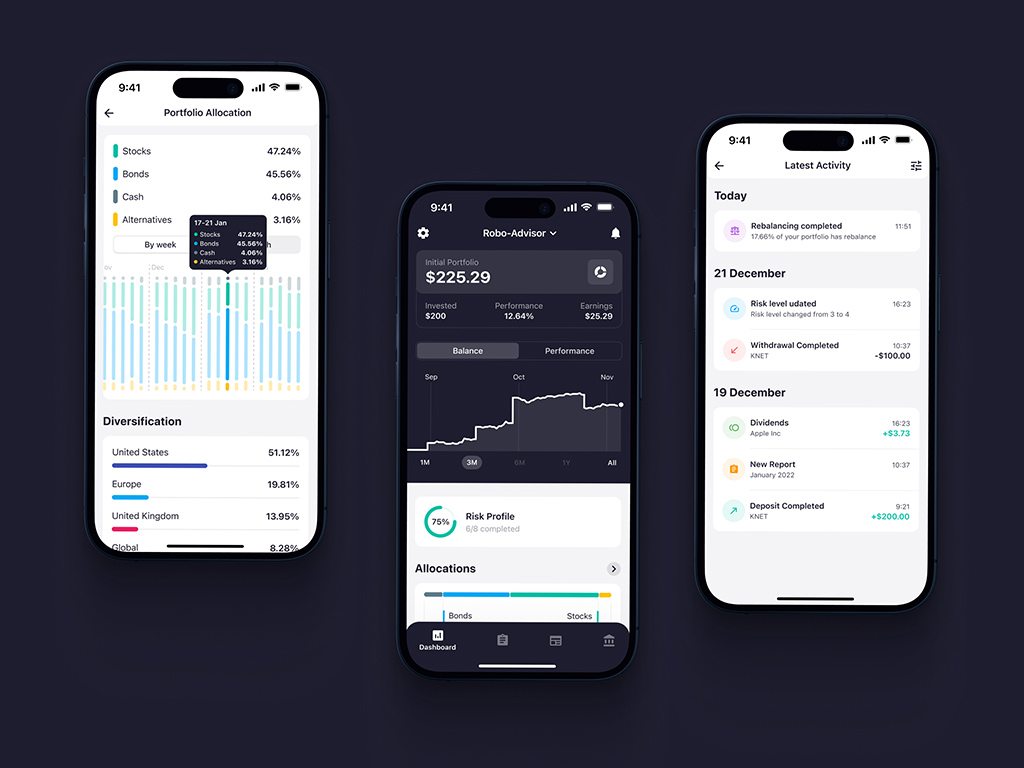
Robo-advisor from ZAD app
Social network
Building a community around your app is a great way to attract more potential users, extend your reach, and promote the brand. In return, people will share ideas, chat, gain followers, and become influencers.
Many investors, particularly novices, seek guidance as they navigate the complexities of the stock market. A social network serves as a platform for education, where experienced traders share valuable resources, market analysis, and strategies, helping others enhance their financial literacy and investing skills.
Still, you shouldn’t force users to show their deals, so let them set their profiles to public or private.
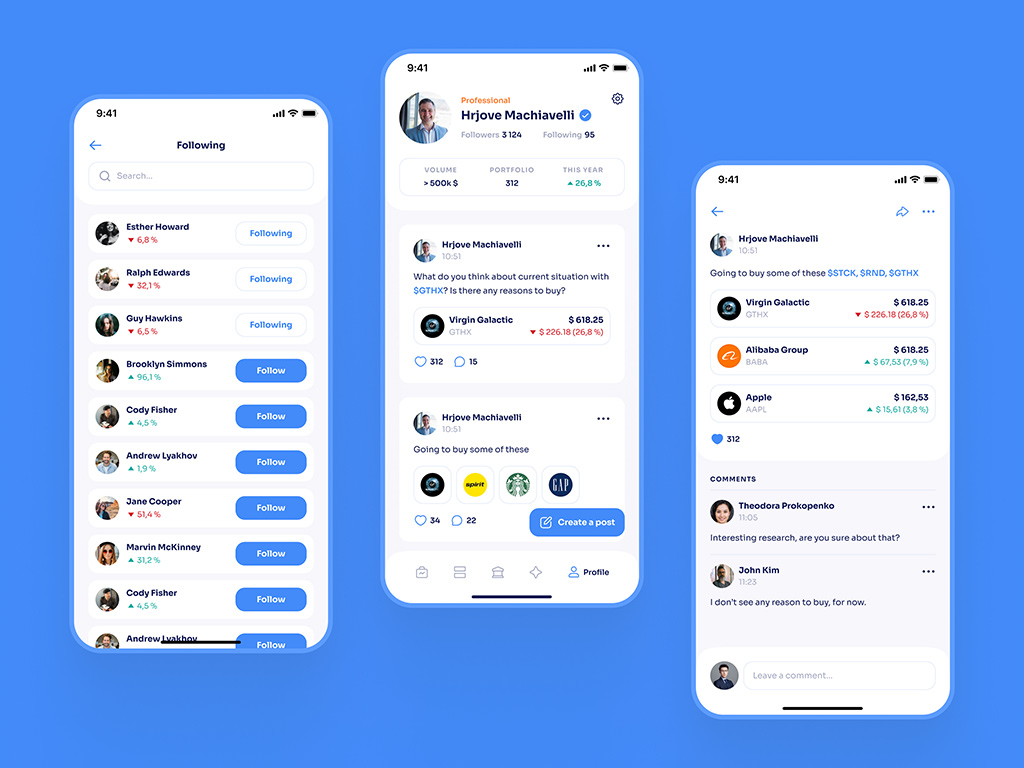
Social network for a stock market app by Shakuro
Model Portfolio
It is a pre-designed collection of investments created by financial experts or based on specific investment strategies or themes. They serve as blueprints that newbies can follow or adapt according to their risk tolerance, financial goals, and investment horizons.
For novice investors, understanding how to construct an effective portfolio is daunting. So model portfolios can become a guiding beacon, showcasing various asset allocations, sectors, and stock selections. This helps users learn the fundamentals of portfolio construction while gaining confidence in their investment choices.
When using a stock trading app, people often struggle to diversify their portfolios effectively. Featuring multiple model portfolios based on different themes (e.g., growth, value, income, risk tolerance) allows users to explore a wide array of investment opportunities. This diversity reduces the risk of overexposure to a single sector or asset class.
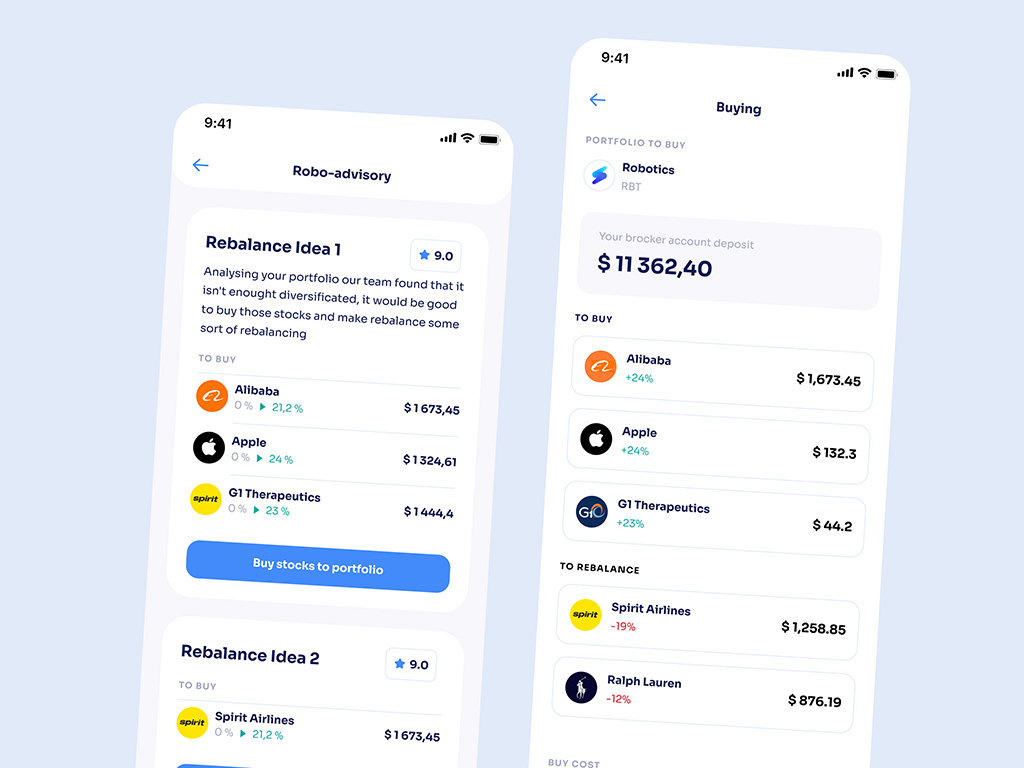
Model portfolio from Solio app
Portfolio Rebalance
Over time, asset prices fluctuate, causing the portfolio to deviate from its target allocation. Rebalancing is bringing it back on track and realigning the assets’ proportions in an investment portfolio. This is often done to restore the initial asset allocation that aligns with an investor’s risk tolerance and investment goals.
Rebalancing instills discipline among investors. It is a practical application of a well-established investment strategy that encourages users to stick to their financial plan, rather than reacting emotionally to market fluctuations.
During trading app development, you can implement rebalance with the help of a robo-advisor. AI analyzes stocks and offers different advice on how to rebalance the assets in just a few taps.
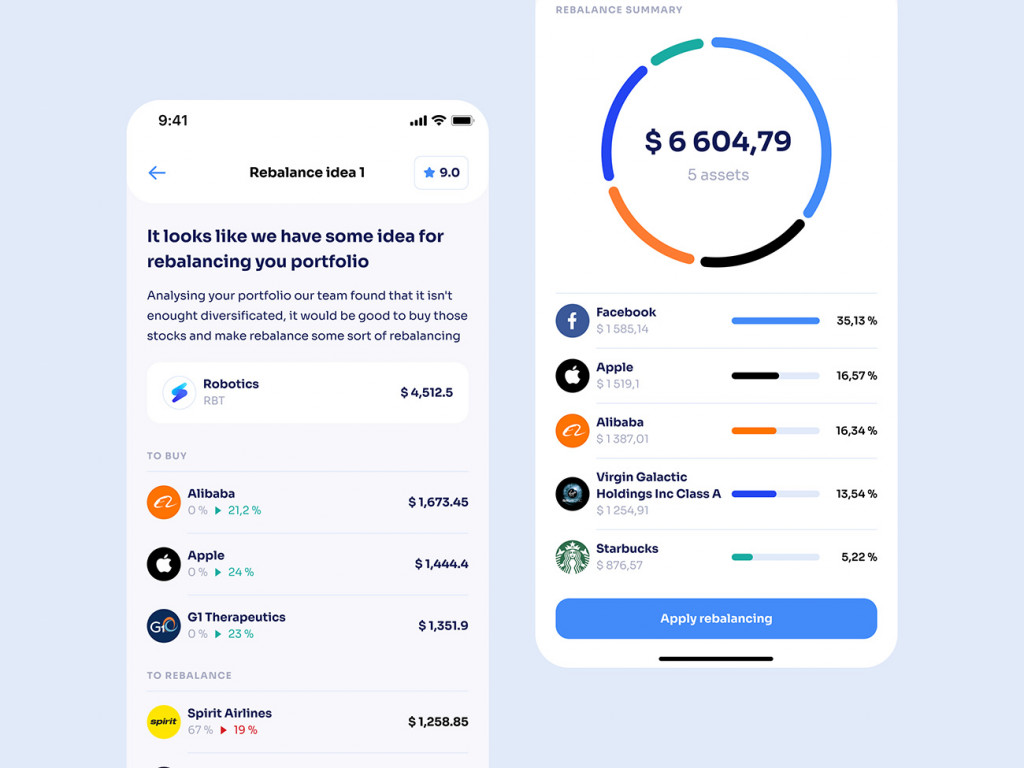
Portfolio rebalance from Solio app
Gamification
Investing can be complex and intimidating for beginners. Gamification provides a less stressful environment to learn the ropes. In the context of a stock trading app, it involves incorporating elements such as rewards, challenges, leaderboards, and achievements to create a more interactive and enjoyable investing experience.
Through quizzes, simulations, and interactive tutorials, you can transform traditional learning methods into fun activities. This way, the users grasp concepts like market dynamics and investment strategies more effectively.
As a motivation to engage more deeply with the app, you can leverage rewards. Points, badges, and levels encourage people to complete educational modules, achieve investment milestones, or regularly check their portfolios. At the same time, they get better investing habits over time.
It takes an average of 66 days to form a new habit, and gamification strategies can shorten this period by offering immediate rewards that reinforce behavior.
Special offers
You can use a variety of incentives to enhance the user experience and encourage specific behaviors. These can include promotional codes for discounts on commissions, certificates for free trades, cash bonuses, and tangible gifts related to financial education or investment tools.
Gift certificates or rewards for referring friends can create a sense of belonging and appreciation, making people less likely to switch to rival platforms. When promoting these special offers, emphasize their value and how they enhance the overall user experience.
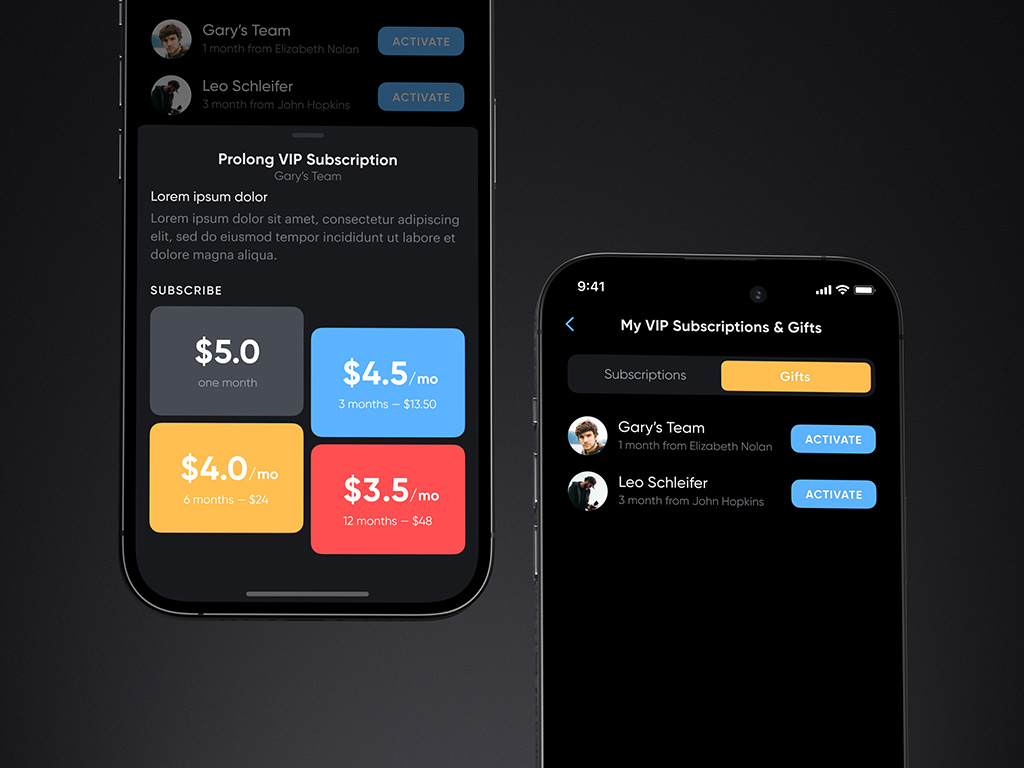
Special offers and gifts
Conclusion
In order to be successful, stock market trading apps must cater to the diverse needs of their users, ranging from beginners to seasoned traders.
Essential features such as onboarding, profile status, and questionnaires foster informed decision-making and enhance the trading experience. For beginners, robo-advisory and model portfolios can demystify the complexities of stock trading. At the same time, experienced traders will appreciate advanced functionalities like social networks and integration with trading platforms.
Ultimately, a well-rounded stock market app has something to offer both beginners and professionals, empowering them at every level to navigate the dynamic landscape of investing with confidence and skill.
Are you looking for an experienced team to integrate these features into your fintech app? Contact us and let’s build a versatile application that fosters healthy financial habits.
* * *
Written by Mary Moore and Eugene Machiavelli
